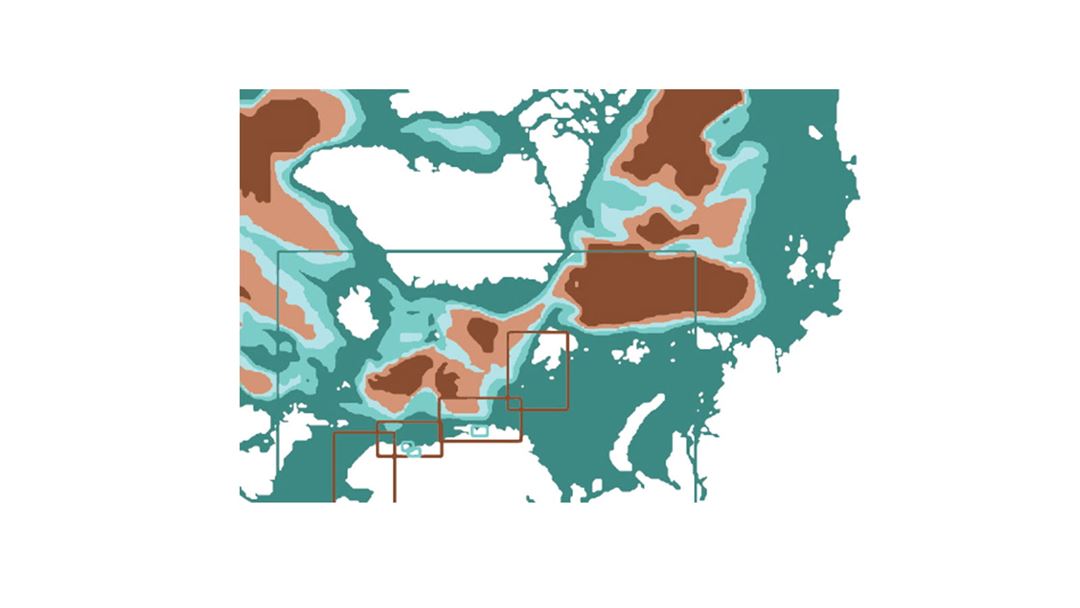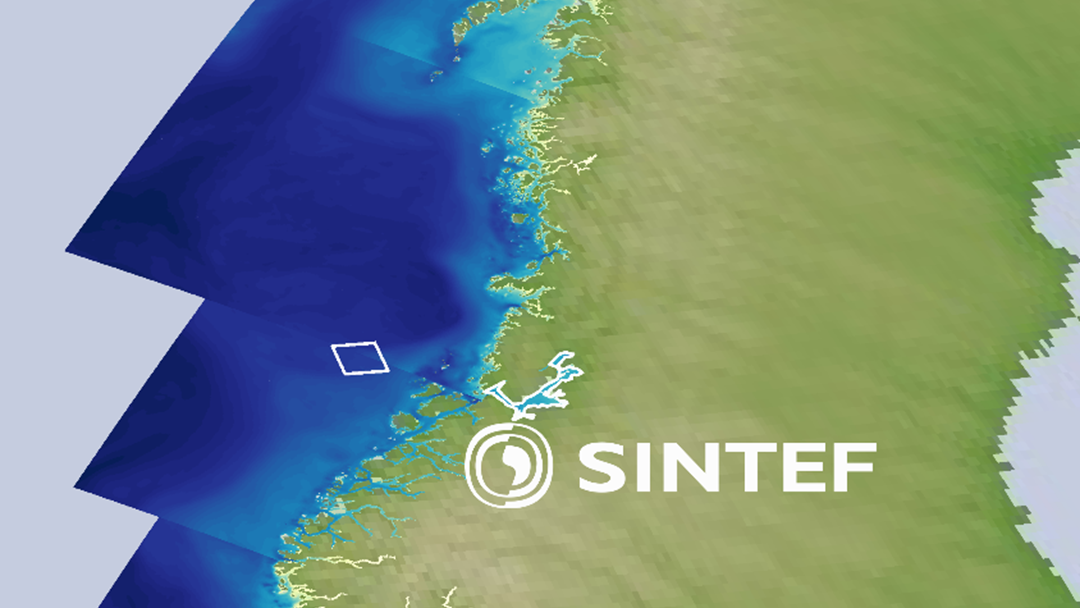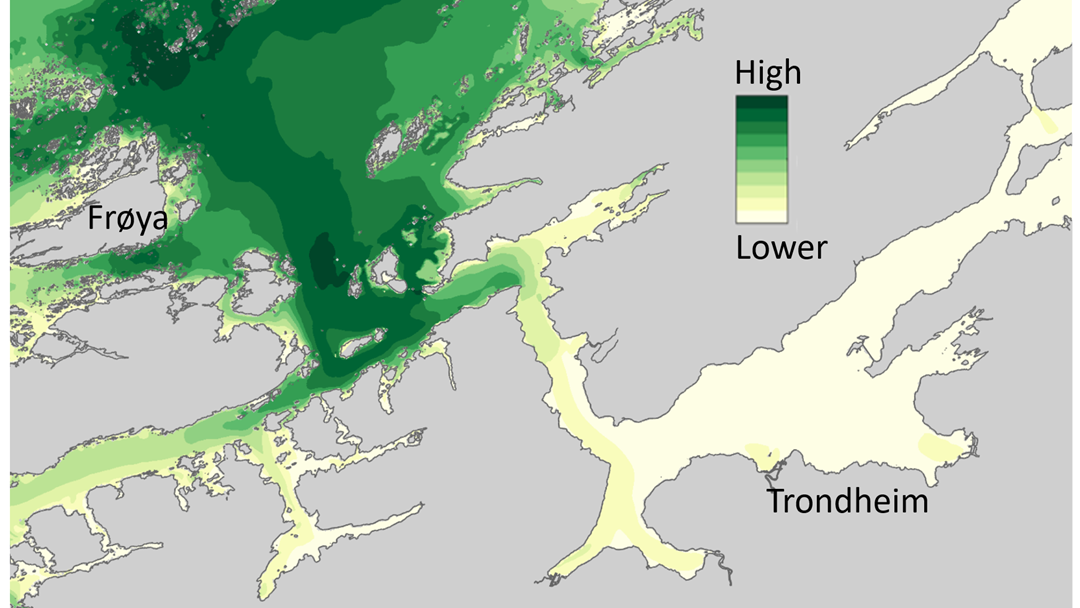WP4: Marine modelling (SINTEF Ocean, Clarkson University)
Maps of the potential for sugar kelp production along and outside the coat of Norway have been developed based on simulation results from the physical-biological ocean model system SINMOD coupled with a growth model for sugar kelp.

Maps of the potential for sugar kelp production along and outside the coat of Norway have been developed based on simulation results from the physical-biological ocean model system SINMOD coupled with a growth model for sugar kelp. The results will be made available for use in GIS-systems and googlemaps. Improvements to the biomass calculations have also been made based on the results from the field cultivation trials in MACROSEA. The model results supported maximum frond length and biomass yield up to 2 months earlier at southern locations than at locations further north in Norway. Estimates for biomass production (yields per unit ocean area) have also been made suggesting an average potential at 75 tons per hectare at harvest in June (range 20-220 tons per hectare depending on deployment time). The growth model for sugar kelp has been further developed to account for interactions with the light field (self shading). These developments entail an improved and more flexible system for calculations of kelp biomass production.


